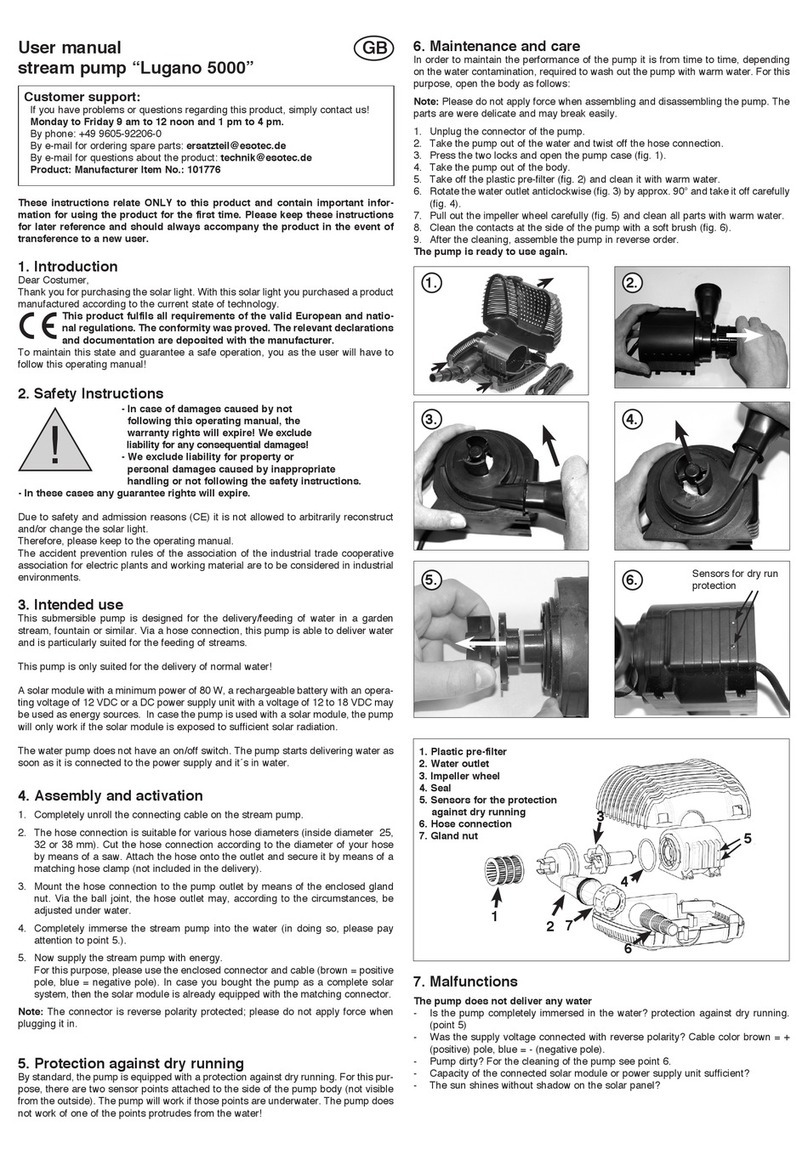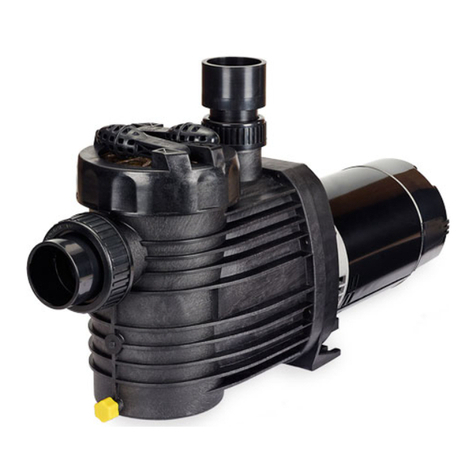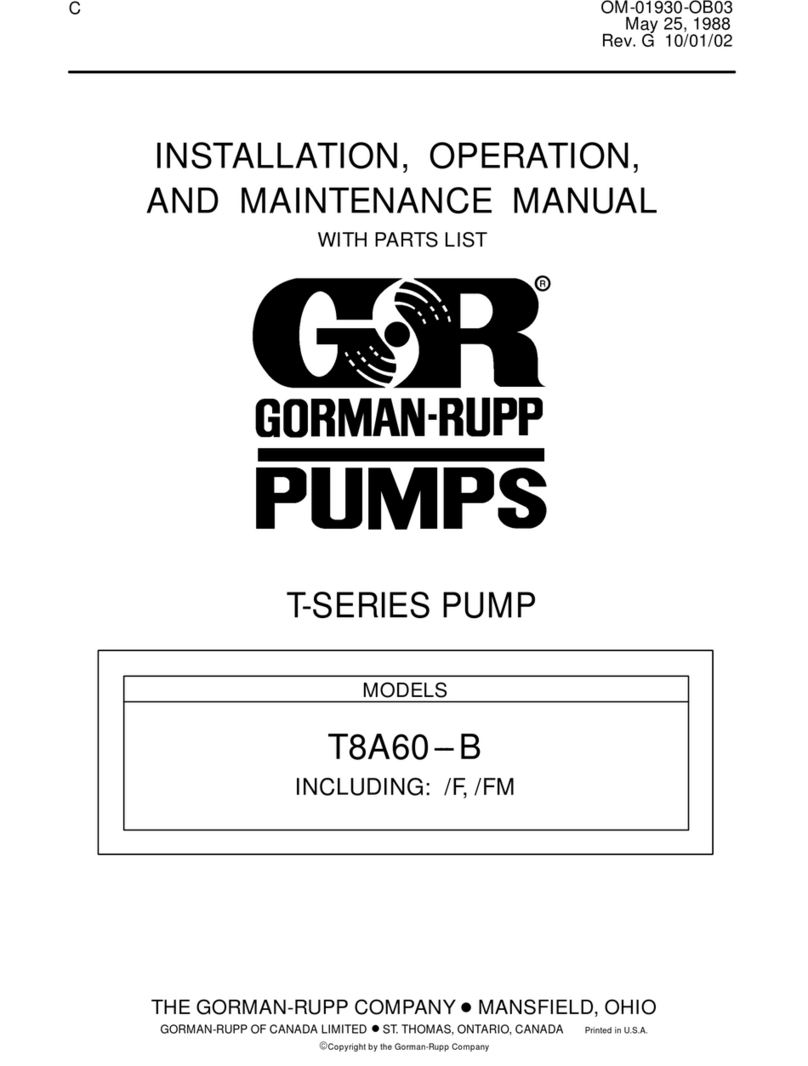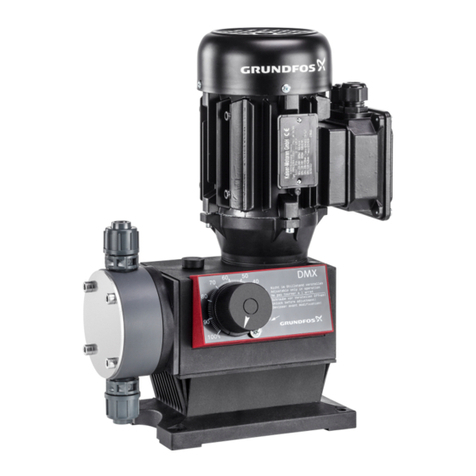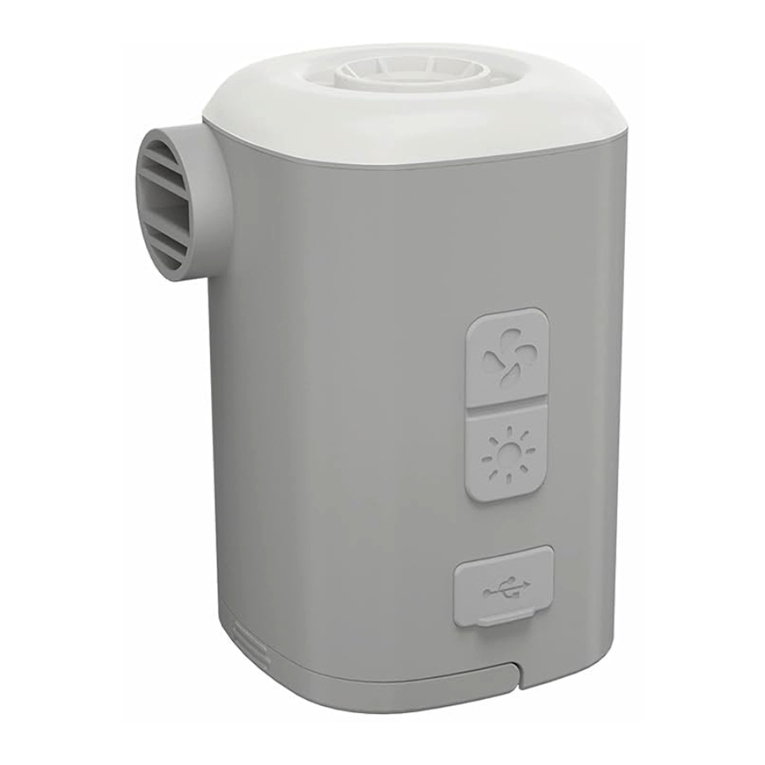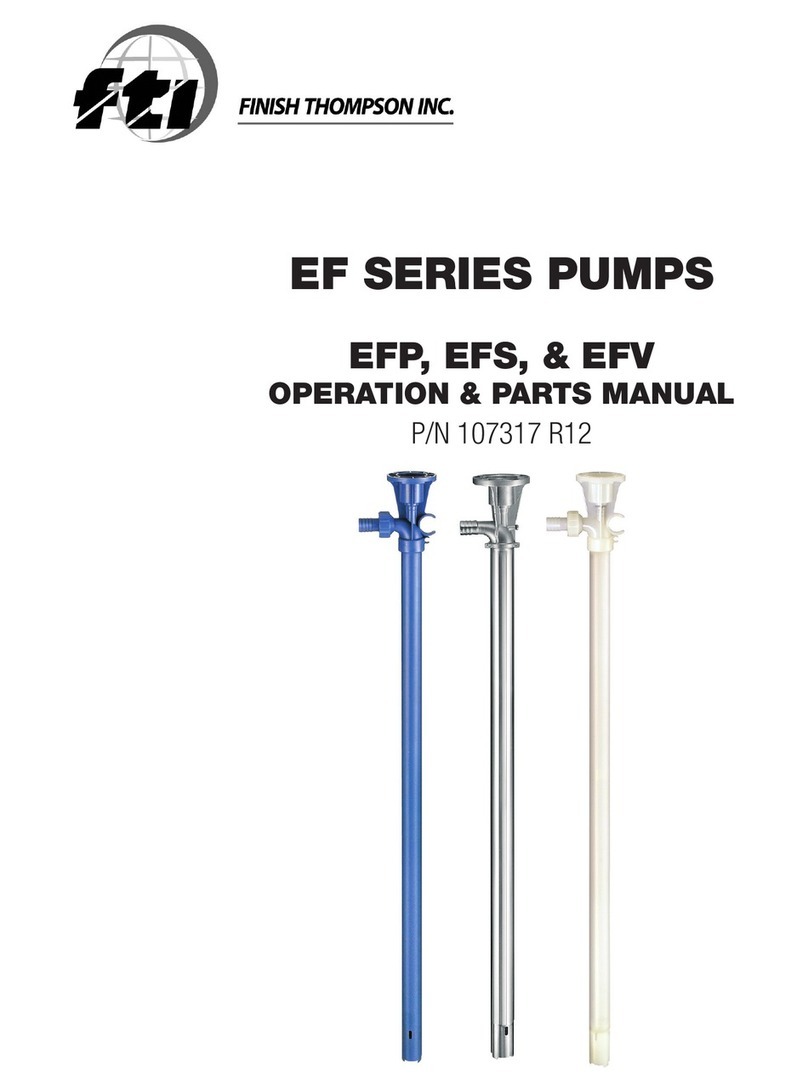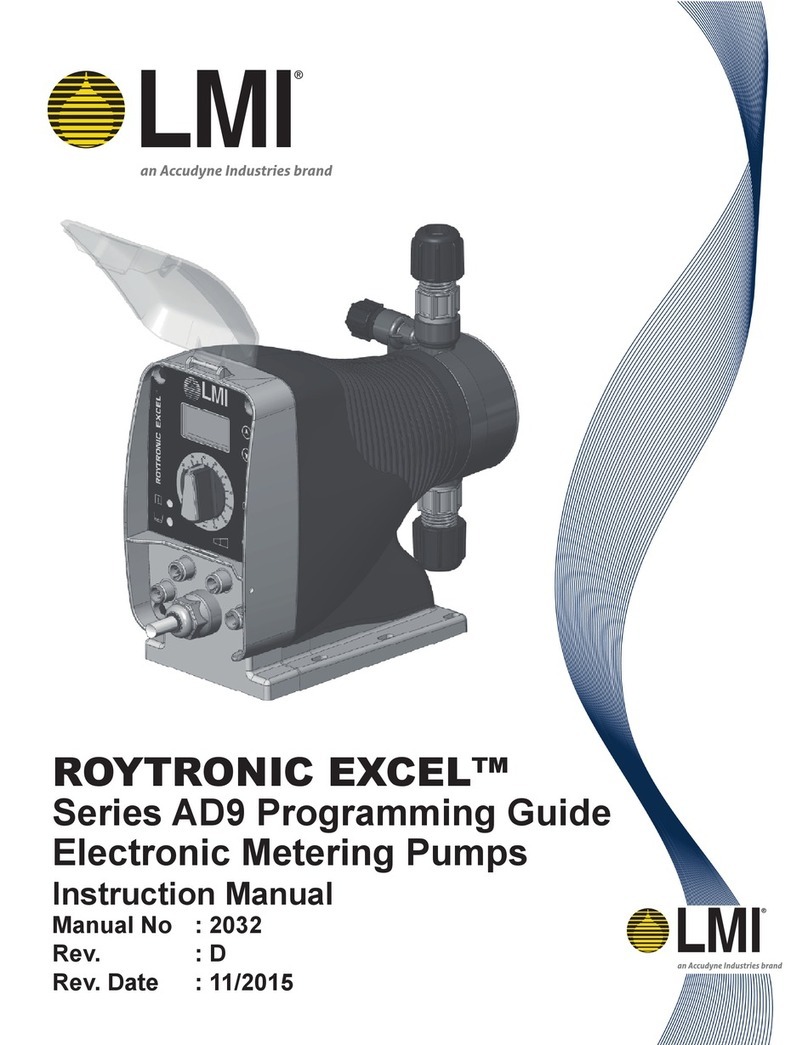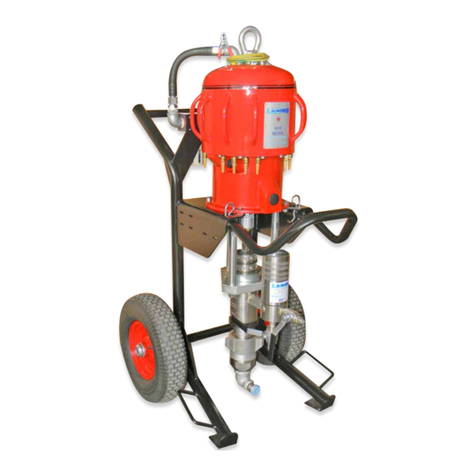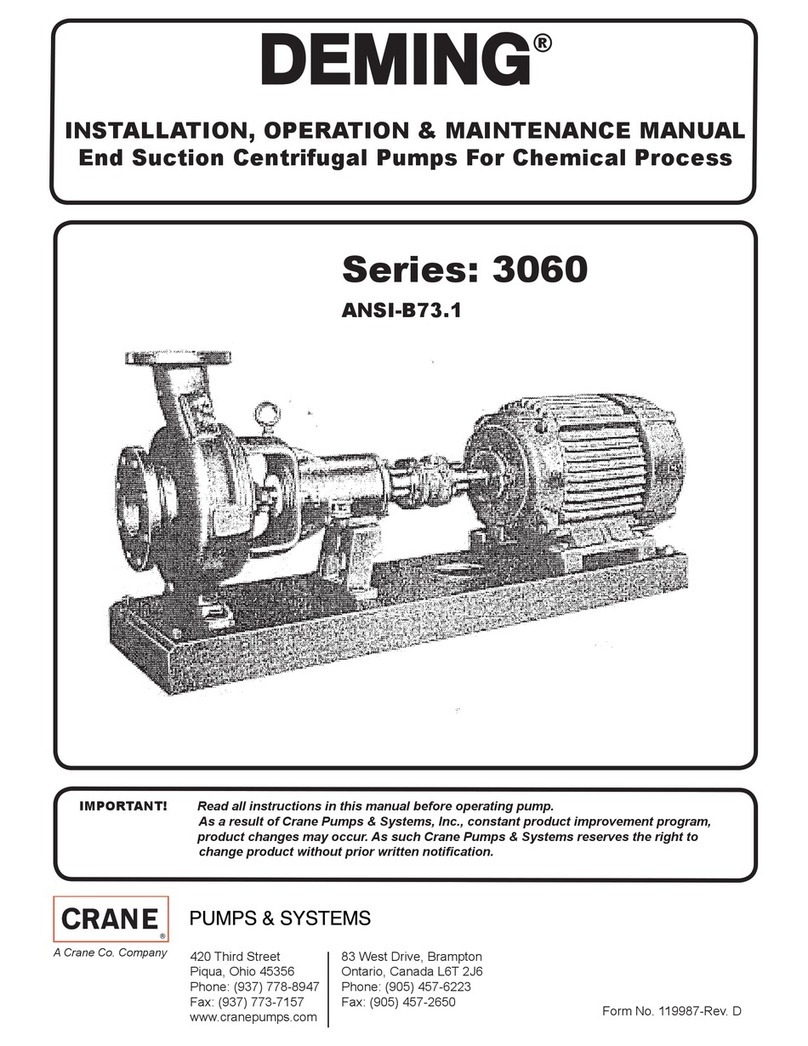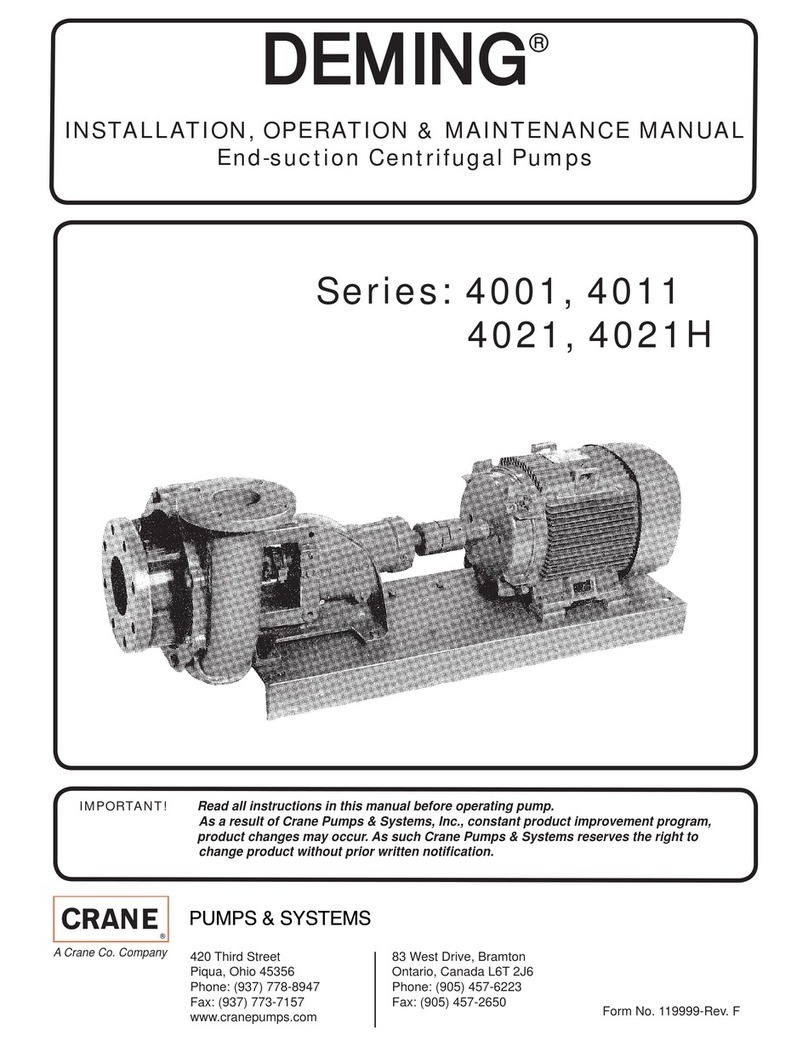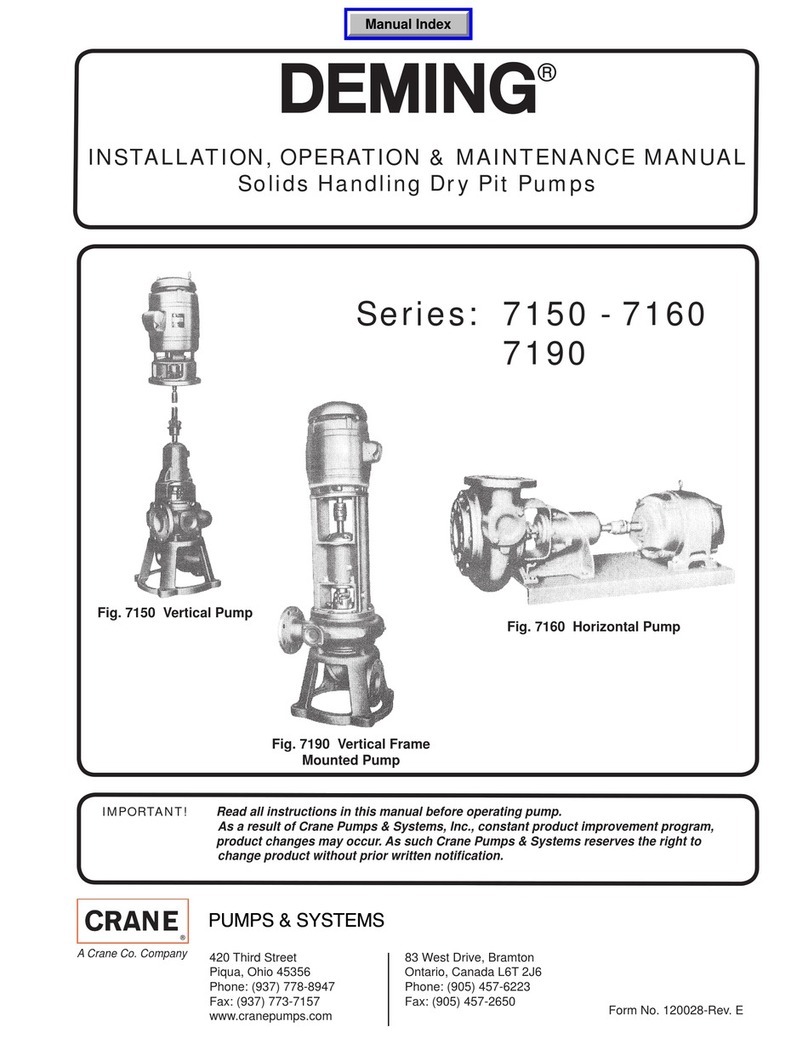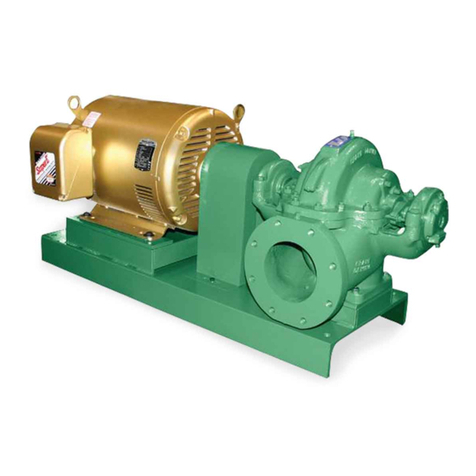
6
1. If adequate suction head is available, air can be
relieved from the casing and packing box by one of
two means:
a. For packed pumps, remove pipe plug (264) or
recirculation line fitting from discharge flange.
Replace when casing has been completely filled.
b. For pumps with mechanical seals, remove pipe
plug (208) from stuffing box or seal gland if
flexible-mounted. Do not replace the plug until all
air has escaped.
2. In cases where there is suction lift and system liquid is
not available, install a foot valve in the suction line.
Prime by filling suction piping and casing completely
through the tap in the discharge flange. Provide an air
vent at the high point.
When the pump is fully primed, start the motor and slowly
open the valve in the discharge line.
Inital Adjustments - Packed Pumps
After the pump has been started, packing box glands
should be tightened to prevent excessive loss of liquid.
In cases where packed pumps are operating with a
suction lift over 20 feet, the packing should be lubricated
through the stuffing box tap from an external source. See
“Packing Box” .
Packing should not be too tight, as this will result in
burning the packing and scoring of the shaft sleeve. The
best gland adjustment will allow liquid to drip slowly from
the packing box gland. This will permit proper lubrication
of the shaft and dissipate generated heat. The gland must
NEVER be tightened to the point where leakage through
the stuffing box is completely stopped.
Initial Adjustments - Pumps with Mechanical Seals
Mechanical seals are factory-adjusted at the time the
pump is assembled and, normally, need no further
adjustment in the field. The only prerequisite to operating
an In-Line pump equipped with a mechanical seal is to
make certain the seal chamber is filled with a compatible
liquid before starting the pump.
NOTE: Numerals shown within parentheses after part
names on this and pages following provide ready
identification of such parts in the cross sectional
drawings.
MAINTENANCE
D - Lubrication
Motor Bearings - See motor manufacturer’s recommendations
on motor name plate.
Packing Box - Packing must be continuously lubricated.
Packed pump are normally furnished less an external
recirculation line. When operating with suction lift and
clean liquid, recirculation from the pump discharge to
the packing box (or suitable grease) may be used, see
“Initial Adjustments” . When lubrication is supplied from an
outside source, it should be cool, clear water, light lithium
base grease, or a compatible lubricating fluid.
Single Seal - Pumps with single seals are normally
furnished with an external recirculation line. A portion
of the liquid being pumped is recirculated from the
casing through the seal chamber to serve as a lubricant
and coolant. An alternate method is to supply a cool,
compatible lubricating liquid from an outside source to
the seal chamber at a pressure 15 to 25 psi higher than
suction pressure.
Double Seal - On double seal applications, the seal
chamber must be filled with lubricant or clear, compatible
lubricating liquid under pressure. The liquid may be from
an outside source or may be from the pump discharge
passing through a filter and/or heat exchanger when
necessary. Pressure on the box must be 15 to 25 psi
higher than suction pressure. The liquid must circulate
through the outlet and a restriction must be placed in the
outlet to assure pressure on the seal chamber.
Packing Box Care - Before installing new rings of
packing, clean the packing box and inspect parts for wear.
If the shaft sleeve is worn, replace it, new packing will not
do an adequate job on a worn sleeve. Die molded packing
rings are preferable. Insert two rings. Twist the rings
sideways when installing, DO NOT pull the rings straight
out over the shaft. Stagger the joints to minimize leakage.
Tamp each ring in place and then slip the lantern ring into
the packing box behind them. Add three more rings behind
the lantern ring. Replace the gland and bolts, rotate the
shaft, and tighten gland securely. Be sure the lantern ring
is positioned to receive lubrication through the orifice in
the housing. Tighten nuts securely to seat the packing,
rotate the shaft several turns, and then loosen the nuts to
“finger-tightness” for starting.
IMPORTANT! - Liquid being pumped should
drip slowly but constantly through the packing
and gland. This will prevent overheating, high
power consumption, and shaft sleeve damage.
If packing replacement becomes frequent:
a. Check motor bearing for excessive wear causing
shaft run-out.
b. Check packing for proper grade. Also, check
whether special packing is used, see pump data
card.
c. Check shaft sleeve for excessive wear or scoring
d. Check for crystallization of solution and for
embedded abrasives in the packing. Method of
packing lubrication may not be satisfactory.
e. Check recirculating line, if used, as well as
relevant fittings for partial or full blockage.
E - DISASSEMBLY
The In-Line Pumps feature “pull-out maintenance”
whereby the rotating assembly can be removed while the
casing remains in the line. To facilitate disassembly, refer
to Figure 6 thru 9 and to assembly drawings on page 10.













